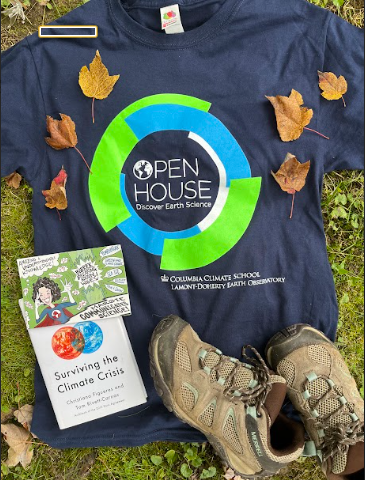
A bathtub full of Oobleck. Explosive volcanoes. VR headsets. Tanks full of live fish. Superhero comics featuring scientists.
These are just some of the staple exhibits found at Lamont-Doherty Earth Observatory’s annual Open House event, hosted in part by Nanuet High School’s future scientists. An integral part of Columbia University, the Lamont Campus is home to some of the world’s top researchers, in the heart of our very own Rockland County.
With its ethos of cutting edge research, Lamont’s gravitas can be a double-edged sword. Oftentimes, its mission is seen as lofty, niche, and too intimidating to delve into.
That’s what makes Lamont’s Open House such a unique event: every second Saturday in October, everyone is invited to learn about science. Lamont’s scientists spend the day tabling at their respective exhibits, which were peppered with some of Nanuet’s scientists-in-training this year.
The event is part of an effort to make science more “accessible” to all audiences, according to Ash Davila, a current senior and a former intern at Lamont’s Next Generation of Hudson River Educators program.
“It helps make science accessible to all audiences,” said Davila. “I think scientific fields tend to have this elitist quality to them because of how inaccessible the information is to the general public.”
Scientific jargon can be a turn-off for people, Davila explained, so effective communicators are crucial in ensuring that everyone is on the same page.
“Science communication helps bridge that gap, and it encourages more people to actually pay attention to science,” Davila said.
Siya Balapal, a current senior and a former intern at the Polar Ambassadors program, shared her hopes of inspiring youth through this event.
“It’s really important for youth to have environmental education because then they can go home and tell their families, and that way it can spread throughout communities,” said Balapal.
This education is key to galvanizing the public, she explained, and can even encourage young people to work in these fields.
“It’s hard to actually have people…make a difference without having the basic information,” said Balapal. “If they don’t realize what’s available, less people are going to want to become environmentalists.”
Balapal has a unique perspective on the event, as someone who has been on both sides of the table. After attending as a visitor last year, being an educator opened her eyes to how much effort truly goes into running the event. Comparing both of her experiences at Open House, Balapal ultimately prefers being an educator.
“It’s a lot more exciting when you’re teaching someone about something new,” she said. “It’s something that completely changes they’re point of view.”
For years, the Open House has made her feel more included in the scientific community, according to Kimberly Cheung, a current senior with research experience outside of Lamont.
“I feel that many people see science as a fery gate-kept field that you can only understand if you are some elite person. But that is definitely not the case,” noted Cheung. “Creating accessible science through things like the Open House bridges that gap.”
She was particularly looking forward to the lectures at the event, especially those related to climate change, she explained.
“The pumping of CO2 in the ground is so cool,” said Cheung. “Also the lecture on why climate change is such a problem right now, even though in the prehistoric ages it’s been much hotter.”
She spoke candidly about how much the event has impacted her, and recommends it to people of all backgrounds.
“Even if you are not a ‘science person,’ you could learn a bit more about the world around us and see some things you would never be able to otherwise.” she said.